Thingiverse
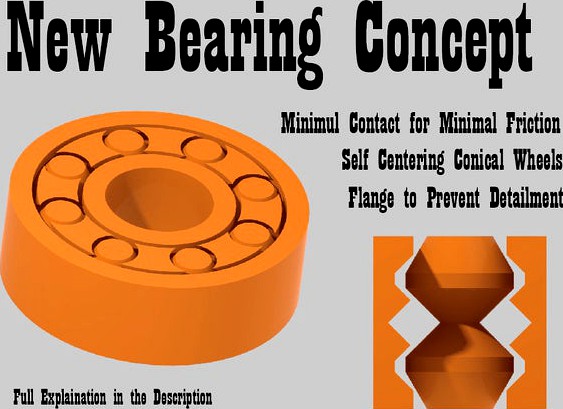
New 608 Bearing Concept: Conical Geometry Bearings by DrMcWoofies
by Thingiverse
Last crawled date: 3 years, 3 months ago
Intro
There is an old saying, "Don't reinvent the wheel". However, if we never reinvented the wheel, we would still be stuck in a Fred Flintstone society with Fred Flintstone Cars yabadabadoo'ing our way down town, walkin' fast, faces pass and we're homebound. So therefore, I am literally reinventing the wheel. Here is the latest technology in print in place bearings.
Version 2
Second Version is just a few touchups. The basic one has a clearance of 0.1 mm, the one with a tighter clearance has a clearance of 0.05mm. A 6 roller variant was also added for people with printers that can't print a 0.8mm rod.
Printing Tips
Remember, if your prints have elephant's foot, then this tiny bearing obviously will not work after printing due to parts fused or warped geometry. So if you never tuned this issue out of your printer, print with a raft. Remember this is actually a pretty difficult print with a number of small parts, it will be advisable to print slower just incase. That being said, my ender 3 pro handled this print with pretty standard print settings.
Other tips include changing Z-seam alignment to random and also lowering flow rate.
It is very simple to free this bearing. Hold the center, and roll it furiously against a bed or couch cushion until it feel's relatively free. This will wear out all the random imperfections and smooth the overall shape.
Design
So what makes this bearing so special? How is it any different from any of the other random selections out there? Well let me tell you. This bearing was designed with absolutely minimalizing contact area of the rolling elements. Most of the other bearings, except the massive herringbone gears, have 2 lines of contact on the rolling element. Normally, on a simple cylinder this doesn't affect the friction. But most designs feature cylinders shaped in a way with the housing that the parts will not fall out by changing the radius certain heights. These shaped cylinders will roll at slightly varying speeds and have areas with different speeds in contact with one another causing a lot of friction. My design only has 4 points of contact, 2 on each housing, and all those points will pretty much never have differing speeds at points in contact that cause friction.
How this is achieved comes from the shape of the rolling elements. These rolling elements work off of the same theory as the conical shape of train wheels. The conical shape when rolling down a rail will naturally self align to the center without intervention. With this in mind, the rolling elements in this bearing rolls on rails that are in the housing. There is also a built in flange in the bearing to keep the them from falling out. While not normally used in operation, the flanges keep the bearings bearing from derailing, similarly to trains. The size of the flange is still kept to the minimum to reduce friction in the event that the flanges are in use.
Another element as to why this bearing is different is the method of keeping the rolling elements in the correct positions. This design has a very off hand approach to securing the bearings, in a sense that they will only be corrected if it moves too much out of range. If the bearing was to move out of range, only a very small section at the top and bottom of the bearing will actually come into contact to keep it from moving too much. Otherwise it is highly reliant on the geometry naturally correcting itself. This further reduces friction as it reduces the amount of times the bearing is in contact with parts correcting it.
It has come to my attention that the flange is useless in the standard variants with 0.1mm of clearance between the rolling element and the rails. However the theory still stands and is actually useful in the 0.05mm clearance variants.
To everyone saying this is useless or isn't better than normal ball bearings
Of course it isn't, this is 3d printed; since when is 3d printed mechanical objects better than the standard. This is just for people who want a 3d printable bearing that has very low rolling friction and load. Nobody wants to waste premium ~1.00 USD 608 bearings which (obviously) have superiors load, thrust, speed, friction, reliability properties when all they needed was low friction and cheap.
There is an old saying, "Don't reinvent the wheel". However, if we never reinvented the wheel, we would still be stuck in a Fred Flintstone society with Fred Flintstone Cars yabadabadoo'ing our way down town, walkin' fast, faces pass and we're homebound. So therefore, I am literally reinventing the wheel. Here is the latest technology in print in place bearings.
Version 2
Second Version is just a few touchups. The basic one has a clearance of 0.1 mm, the one with a tighter clearance has a clearance of 0.05mm. A 6 roller variant was also added for people with printers that can't print a 0.8mm rod.
Printing Tips
Remember, if your prints have elephant's foot, then this tiny bearing obviously will not work after printing due to parts fused or warped geometry. So if you never tuned this issue out of your printer, print with a raft. Remember this is actually a pretty difficult print with a number of small parts, it will be advisable to print slower just incase. That being said, my ender 3 pro handled this print with pretty standard print settings.
Other tips include changing Z-seam alignment to random and also lowering flow rate.
It is very simple to free this bearing. Hold the center, and roll it furiously against a bed or couch cushion until it feel's relatively free. This will wear out all the random imperfections and smooth the overall shape.
Design
So what makes this bearing so special? How is it any different from any of the other random selections out there? Well let me tell you. This bearing was designed with absolutely minimalizing contact area of the rolling elements. Most of the other bearings, except the massive herringbone gears, have 2 lines of contact on the rolling element. Normally, on a simple cylinder this doesn't affect the friction. But most designs feature cylinders shaped in a way with the housing that the parts will not fall out by changing the radius certain heights. These shaped cylinders will roll at slightly varying speeds and have areas with different speeds in contact with one another causing a lot of friction. My design only has 4 points of contact, 2 on each housing, and all those points will pretty much never have differing speeds at points in contact that cause friction.
How this is achieved comes from the shape of the rolling elements. These rolling elements work off of the same theory as the conical shape of train wheels. The conical shape when rolling down a rail will naturally self align to the center without intervention. With this in mind, the rolling elements in this bearing rolls on rails that are in the housing. There is also a built in flange in the bearing to keep the them from falling out. While not normally used in operation, the flanges keep the bearings bearing from derailing, similarly to trains. The size of the flange is still kept to the minimum to reduce friction in the event that the flanges are in use.
Another element as to why this bearing is different is the method of keeping the rolling elements in the correct positions. This design has a very off hand approach to securing the bearings, in a sense that they will only be corrected if it moves too much out of range. If the bearing was to move out of range, only a very small section at the top and bottom of the bearing will actually come into contact to keep it from moving too much. Otherwise it is highly reliant on the geometry naturally correcting itself. This further reduces friction as it reduces the amount of times the bearing is in contact with parts correcting it.
It has come to my attention that the flange is useless in the standard variants with 0.1mm of clearance between the rolling element and the rails. However the theory still stands and is actually useful in the 0.05mm clearance variants.
To everyone saying this is useless or isn't better than normal ball bearings
Of course it isn't, this is 3d printed; since when is 3d printed mechanical objects better than the standard. This is just for people who want a 3d printable bearing that has very low rolling friction and load. Nobody wants to waste premium ~1.00 USD 608 bearings which (obviously) have superiors load, thrust, speed, friction, reliability properties when all they needed was low friction and cheap.
Similar models
grabcad
free

Rolling Element Bearings
... same principle is in work
here. rolling element bearings are used to
facilitate the free movement of parts in rotational
motion.
grabcad
free

Roller Bearings
...bearings — also known as rolling-element bearings — are similar to ball bearings in that they are designed to...
grabcad
free

Roller Bearing
...bearings — also known as rolling-element bearings — are similar to ball bearings in that they are designed to...
thingiverse
free

Slew Bearing Conic, with Spacers, parametric Design with Fusion 360 by TheGoofy
...ical - nevertheless i've exported them separately.
related video (tutorial with cylinder rolls): https://youtu.be/5o4fj8oxkb8
grabcad
free

Stacked Rolling Element Layered Radial-Axial Truncated Conical Roller Bearing
...complement tapered roller bearing, or between the rolling elements and their cage, in the case of a caged tapered roller bearing.
grabcad
free

Bearing
...earings are cost-effective and exchangeable machine elements that typically follow national or international dimension standards.
grabcad
free

Triple Rolling Element Layer Tapered Roller Axial Bearing.
...complement tapered roller bearing, or between the rolling elements and their cage, in the case of a caged tapered roller bearing.
grabcad
free

Ball Bearing
.... ball bearings use balls to separate two “races,” or bearing rings, to reduce surface contact and friction across moving planes.
grabcad
free

Ball Bearing
.... ball bearings use balls to separate two “races,” or bearing rings, to reduce surface contact and friction across moving planes.
grabcad
free

Radial Ball bearing
.... ball bearings use balls to separate two “races,” or bearing rings, to reduce surface contact and friction across moving planes.
Drmcwoofies
thingiverse
free

Coronavirus Model Remastered by DrMcWoofies
...hey are as evenly distributed as possible. this way there are no patterns and the virus is even more accurate than it was before.
thingiverse
free

Plastic Bottle Watering Spout 9000 by DrMcWoofies
...ned with drainage holes to try to remove water buildup inside due to leakage, this thing is technically resin printing compatible
Conical
3d_export
$6

conical crusher
...sher
3dexport
conical crusher designed for models, industrial equipment for the simulation of a real machine in mining companies
3ddd
$1

Cor / Conic
... обеденный , овальный
обеденный стол conic table производитель cor размеры 220*125*74 см
3d_ocean
$15

Conical juniper
...ical juniper shrub
high detalisation great for various visualization closeup because of the format *.obj great for any 3d package
turbosquid
$1

Conic Spring
...alty free 3d model conic spring for download as stl and sldpr on turbosquid: 3d models for games, architecture, videos. (1453633)
3d_export
free

conical pyramid
...conical pyramid
3dexport
beautiful pyramid
turbosquid
$15

Conical pinion
...el conical pinion for download as ige, obj, fbx, dwg, and stl on turbosquid: 3d models for games, architecture, videos. (1302547)
turbosquid
$5

Conical Kite
...cal kite for download as blend, blend, 3ds, dae, fbx, and obj on turbosquid: 3d models for games, architecture, videos. (1579408)
turbosquid
$5

Conical Helmet
...l helmet for download as blend, blend, 3ds, dae, fbx, and obj on turbosquid: 3d models for games, architecture, videos. (1594612)
design_connected
$13

Conic Section Light
...conic section light
designconnected
castor conic section light computer generated 3d model. designed by castor.
3ddd
$1

Allermuir Conic
...allermuir conic
3ddd
allermuir
сайт производителяhttp://www.allermuir.com
608
3d_export
$7

mb 608
...t;br>can be used wherever you want, games, commercials, billboards, everything.<br>blender<br>fbx<br>obj stl
3d_export
$60

Architecture 608 3D Model
...lege campus max street landscape commercial building medical hospital offices
architecture 608 3d model lotusmodel 48741 3dexport
3d_export
$160

3d building 608 3D Model
...metropolis street block detailed definition realistic skyscraper huge collection
3d building 608 3d model kanhtart 44669 3dexport
turbosquid
$20

Bowers & Wilkins ASW 608 Black
... available on turbo squid, the world's leading provider of digital 3d models for visualization, films, television, and games.
3d_export
$50

3D Home 608 3D Model
... chair furniture texture table lamp apartment rug carpet restaurant hotel sitting
3d home 608 3d model richard3015 46671 3dexport
turbosquid
$8

(608) Decor Element -3d STL model for CNC
... available on turbo squid, the world's leading provider of digital 3d models for visualization, films, television, and games.
3d_export
$14

ficus tree in pots for the interior 608
...njamina<br>howea forsteriana<br>date palm<br>banana palm<br>ravenala madagascariensis<br>strelitzia
3ddd
$1

Пуф
...пуф 3ddd пуф polys: 64 608 размеры: l-500 w- 500 h- 500 quads...
cg_studio
$100

3d building 6083d model
... building 6083d model
cgstudio
.max - 3d building 608 3d model, royalty free license available, instant download after purchase.
3d_export
$50

Jaguar XJR 14 lemans 3D Model
...xj 14 jaguar xjr 14 lemans 3d model tyio 608 ...
Bearings
3d_export
$6

Bear
...bear
3dexport
bear
3d_export
$5
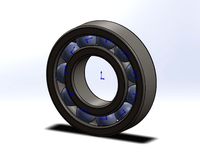
bearing
...bearing
3dexport
bearing
3d_export
$12
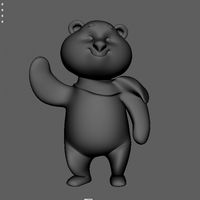
bear
...bear
3dexport
bear for 3d printing toy
3d_ocean
$9

Bearing
...bearing 3docean 3d engine ball ballbea bearing bearings engine hard industrial machine mechanic metal part piece plastic...
archibase_planet
free

Bear
...bear
archibase planet
statuette bear picturesque element
bear - 3d model (*.gsm+*.3ds) for interior 3d visualization.
3d_export
$5

bear
...bear
3dexport
bear have a stl.,3dm files
archibase_planet
free

Bear
...bear
archibase planet
bear animals omnivorous animal
bear angry n250907- 3d model (*.gsm+*.3ds) for interior 3d visualization.
archibase_planet
free
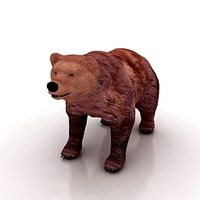
Bear
...bear
archibase planet
bear animals omnivorous animal
bear easy n250907 - 3d model (*.gsm+*.3ds) for interior 3d visualization.
3ddd
$1

Teddy bear
...teddy bear
3ddd
teddy bear , медведь
teddy bear :)
3d_ocean
$12

Bear
... formats. created with 3d max 9.0. this file is very useful for learning & rigging. it can be used for any professional work.
Bearing
3d_export
$6

Bear
...bear
3dexport
bear
3d_export
$5

bearing
...bearing
3dexport
bearing
3d_export
$12

bear
...bear
3dexport
bear for 3d printing toy
3d_ocean
$9

Bearing
...ne ball ballbea bearing bearings engine hard industrial machine mechanic metal part piece plastic ring screw sphere steel
bearing
archibase_planet
free

Bear
...bear
archibase planet
statuette bear picturesque element
bear - 3d model (*.gsm+*.3ds) for interior 3d visualization.
3d_export
$5

bear
...bear
3dexport
bear have a stl.,3dm files
archibase_planet
free

Bear
...bear
archibase planet
bear animals omnivorous animal
bear angry n250907- 3d model (*.gsm+*.3ds) for interior 3d visualization.
archibase_planet
free

Bear
...bear
archibase planet
bear animals omnivorous animal
bear easy n250907 - 3d model (*.gsm+*.3ds) for interior 3d visualization.
3ddd
$1

Teddy bear
...teddy bear
3ddd
teddy bear , медведь
teddy bear :)
3d_ocean
$12

Bear
... formats. created with 3d max 9.0. this file is very useful for learning & rigging. it can be used for any professional work.
Concept
3d_export
$5
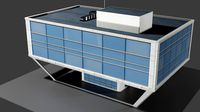
concept house
...concept house
3dexport
concept house blend.
turbosquid
$20
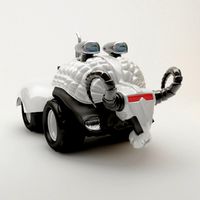
concept
... available on turbo squid, the world's leading provider of digital 3d models for visualization, films, television, and games.
turbosquid
free

concept
... available on turbo squid, the world's leading provider of digital 3d models for visualization, films, television, and games.
turbosquid
free

Concept
... available on turbo squid, the world's leading provider of digital 3d models for visualization, films, television, and games.
turbosquid
free

Concept
... available on turbo squid, the world's leading provider of digital 3d models for visualization, films, television, and games.
3ddd
$1

Bo concept
...bo concept
3ddd
boconcept , декоративный набор
bo concept
3d_ocean
$45

Dreamcar concept
...cept cars from the past.before i became 3d modeler i sketched a lot futuristic cars.when i want it to look more realistic,i st...
3d_ocean
$49

Buggy Concept
... poly massive outdoor robust vehicle
just a model of are own buggy concept vehicle. maybe you can make a beautiful renders of it!
3d_export
free

concept s ii
...concept s ii
3dexport
concept car
3d_export
free

concept s iii
...concept s iii
3dexport
concept car
Geometry
design_connected
$7

Geometry Stool
...geometry stool
designconnected
ligne roset geometry stool computer generated 3d model. designed by ducru, jacques.
turbosquid
free

Abstract geometry
...rbosquid
free 3d model abstract geometry for download as c4d on turbosquid: 3d models for games, architecture, videos. (1340199)
turbosquid
$1

Geometry Box
...oyalty free 3d model geometry box for download as max and fbx on turbosquid: 3d models for games, architecture, videos. (1608060)
turbosquid
$10

Geometry Chair
...ree 3d model geometry chair for download as max, obj, and fbx on turbosquid: 3d models for games, architecture, videos. (1699186)
turbosquid
$3

icecream ( geometry )
... available on turbo squid, the world's leading provider of digital 3d models for visualization, films, television, and games.
turbosquid
free

Web Geometry
... available on turbo squid, the world's leading provider of digital 3d models for visualization, films, television, and games.
turbosquid
$4

infinite geometry
...e geometry for download as 3ds, obj, fbx, blend, dae, and stl on turbosquid: 3d models for games, architecture, videos. (1272938)
turbosquid
$4

the geometry of the cubes
...nload as 3ds, max, dxf, obj, wrl, fbx, w3d, pwc, dwg, and dae on turbosquid: 3d models for games, architecture, videos. (1368178)
design_connected
$11

Geometry Made Easy
...geometry made easy
designconnected
micromacro geometry made easy computer generated 3d model. designed by bernardi, sara .
turbosquid
$5

Geometry Nesting table
...alty free 3d model geometry nesting table for download as fbx on turbosquid: 3d models for games, architecture, videos. (1655135)
New
turbosquid
$119

New New Beetle
... available on turbo squid, the world's leading provider of digital 3d models for visualization, films, television, and games.
3d_export
$5

New-feather
...new-feather
3dexport
new-feather
3d_export
$6
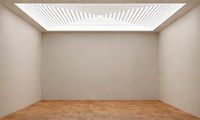
new style
...new style
3dexport
new style room
3ddd
free

New Items
...ew items
3ddd
new items , барный
барный стул от китайского производителя фирмы new items
3d_export
$6
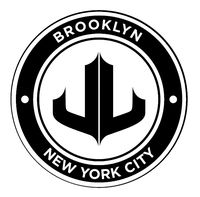
Logo new
...logo new
3dexport
new american style logo
3d_export
$10

New jersey
...new jersey
3dexport
new jersey stp and stl format
design_connected
$20

New Deal
...new deal
designconnected
new deal computer generated 3d model.
3d_ocean
$15
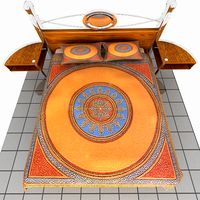
New bed
... for this bed all this file format include in zip file 3ds,obj,max,zip file change material and re-size very easy very for render
3ddd
free

Sofa-New Classic
...sofa-new classic
3ddd
new classic
sofa,new classic
design_connected
$13

New Antiques
...new antiques
designconnected
cappellini new antiques computer generated 3d model. designed by wanders, marcel.
